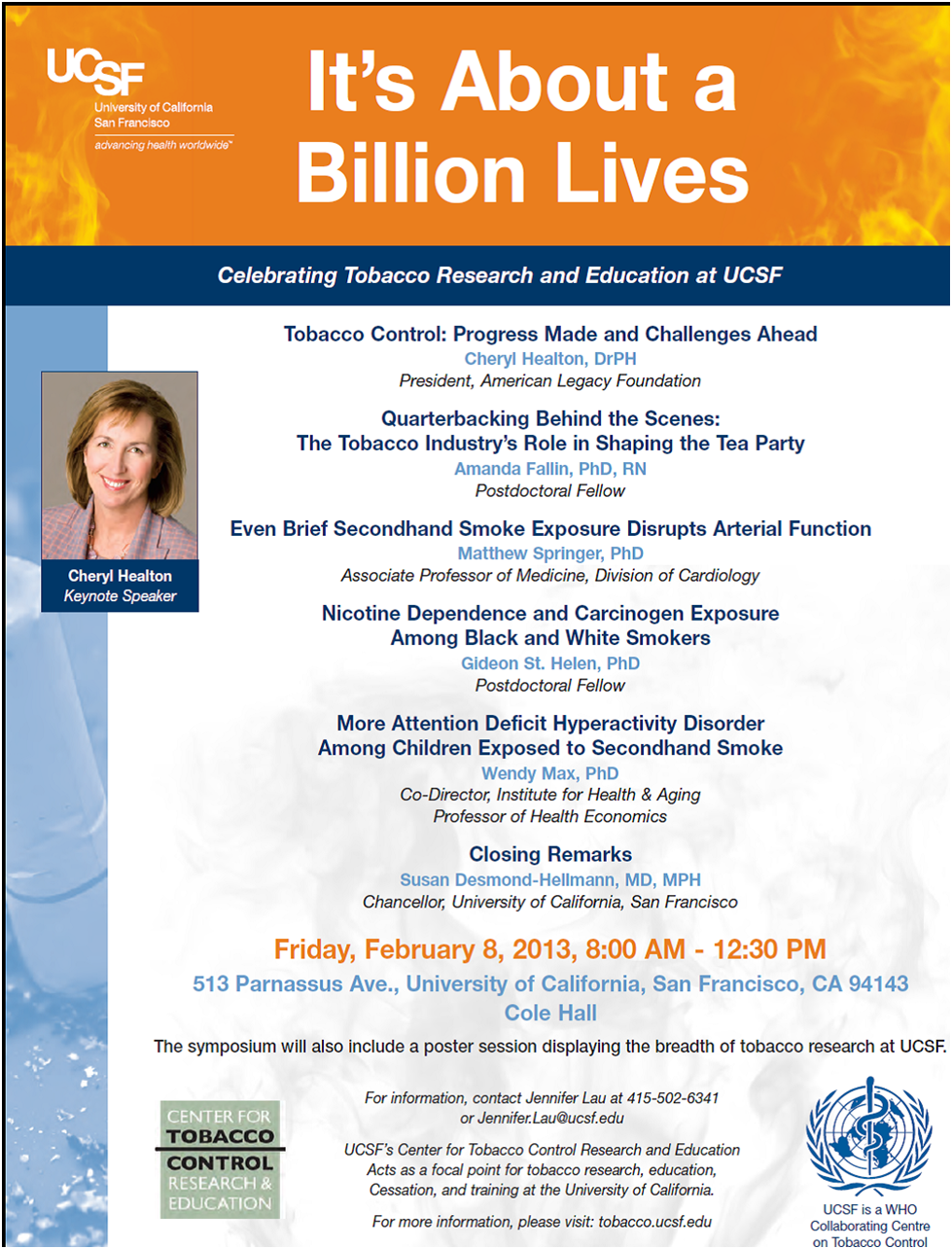January 9, 2013
The paper is. Hospital Discharge Rates Before and After Implementation of a City-wide Smoking Ban in a Texas City, 2004–2008. Prev Chronic Dis 2012;9:120079. DOI: http://dx.doi.org/10.5888/pcd9.120079 by Head P, Jackson BE, Bae S, Cherry D
January 9, 2013
I just submitted the following comment to the FDA regarding how it evaluates industry claims of "substantial equivalence" to regulations.gov. The comment identifier is 1jx-830l-kgne.
I have reviewed this Guidance Document and was surprised not to see any mention of statistical power or effect size, which are crucial issues in evaluating “negative” studies that are presented to show that some change to a tobacco product does not affect its risk profile.
A key question that underlies all statistical analysis of data is the question of how sensitive a study needs to convincingly accept the null hypothesis of no effect (i.e., substantial equivalence). In other words, how confident can one be in interpreting a "negative" finding in the sense of not finding a statistically significant difference before one can conclude "equivalence." This is a particular problem because most statistical hypothesis testing (which gives rise to P values and "statistical significance") implicitly assumes that the investigator wants to find a difference and so is focused on estimating the probability that a reported difference is a change random finding rather than a real effect (i.e., a false positive conclusion).
January 8, 2013
Effective January 1, 2013, Paramount announced its new "Smoking and Tobacco Depiction" policy that "recognizes the serious health risks that accompany tobacco use." and is "why Paramount has developed policies to decrease depictions of smoking and tobacco products in the films it produces, particularly youth-rated films."
While it is great that Paramount recognizes the problem, the policy, like those of the 4 other studios that have adopted such policies, contains a huge loophole to "take into account the creative vision of the filmmakers recognizing that there may be situations where a filmmaker believes that the depiction of smoking or tobacco is important to a film."
In other words, Paramount recognizes the problem but is unwilling to use its economic clout with producers and directors to keep smoking out of its youth-rated films."
Paramount did commit itself to DVDs on youth-rated films with smoking "subject to any contractual requirements" and to a certification of no payoffs in films with smoking.
News Corp. (Fox) is the only MPAA member company without a published policy. Important independents, such as Lionsgate, remain without published policies.
January 7, 2013
The $240 million tax break for Hollywood movie and TV producers inserted in the "fiscal cliff" bill last week is not new.
The bill extends a tax break (IRC Section 181) first granted Hollywood producers in 2004. Essentially, it lets producers immediately write off their first $15 million in production costs.
Porn movies are already explicitly disqualified from taking this tax break. But movies with smoking are getting the subsidy, which means that federal taxpayers will continue helping to pay for movies that addict kids to cigarettes.
Movies with tobacco imagery should also be disqualified. Unlike porn, which is merely objectionable, smoking in movies kills thousands of people in real life.
The U.S. Surgeon General concluded that smoking in movies causes youth smoking and two-thirds of state attorneys general, Democrat and Republican, agree on the harm and the urgent need to reduce kids' exposure.
The federal tax code should not subsidize that killing.

